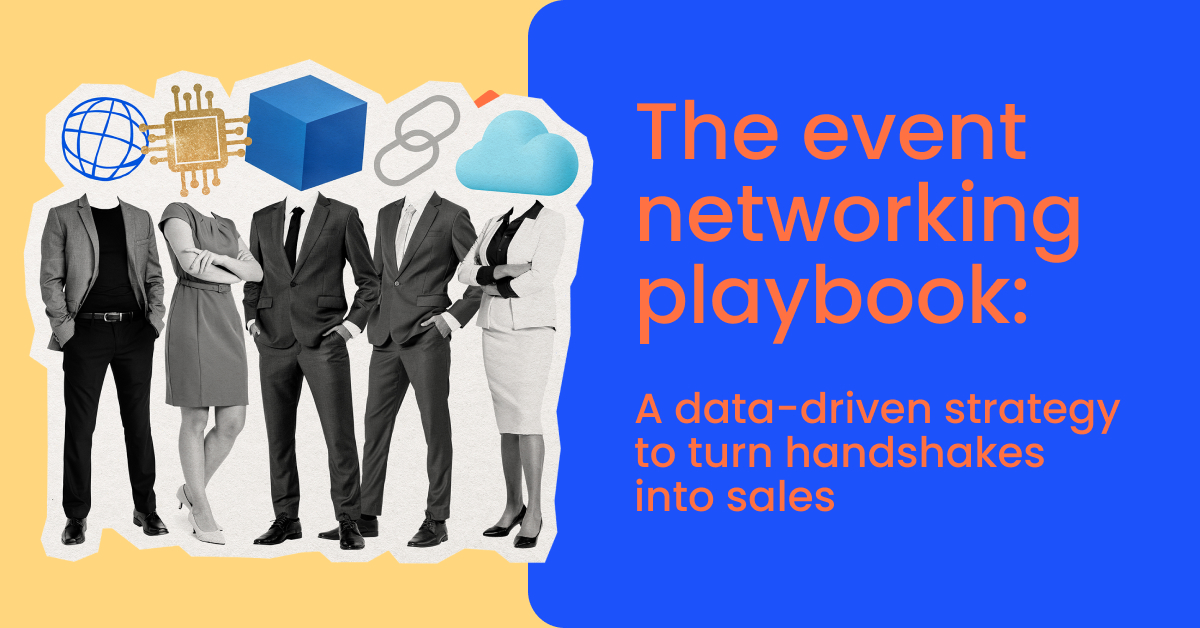🧮 Let’s talk outcomes—not outputs
You had great conversations. The team is buzzing.
But your CMO asks, “How did it perform?”
If your answer is: “We scanned 432 badges…”, you’ve already lost the conversation. What matters isn’t how many people you met—it’s how many are moving down the funnel.
📊 What to measure (and what to ignore)
Let’s draw the line between vanity metrics and value metrics.
| Metric type | Vanity metrics | Value metrics |
| Lead Volume | Total scans, total cards collected | # of qualified leads by tier |
| Engagement | Booth foot traffic | Avg. time spent per convo, # of demos booked |
| Follow-Up | Emails sent post-event | Email open/click rates by segment |
| Sales Impact | Pipeline “mentions” | # of ops created, SQL conversion %, win rate |
| ROI | Event cost + lead count | Cost per opp, deal velocity, revenue influenced |
Real talk: If you’re not measuring pipeline contribution, you’re not measuring event ROI.
📈 The lead-to-revenue timeline: Benchmarks that matter
Here’s how best-in-class teams track event lead impact over time:
| Time frame | Key KPI | Target benchmark |
| Week 1 | Follow-up email delivery + engagement | 60% open rate / 15% CTR for Tier 1 leads |
| Week 2–3 | Meetings booked | 20%+ of Tier 1 leads → meeting scheduled |
| Month 1 | Sales opportunities created | 10–15% of total leads → opps |
| Month 2–3 | Pipeline revenue impact | $ per event / per rep tracked |
| Quarter 1–2 | Deals closed | 3–7% lead-to-close rate (B2B avg range) |
🔄 Create a feedback loop between events and sales
The #1 reason teams fail to tie networking to results?
Marketing and sales teams aren’t aligned on definitions or expectations.
Here’s how to fix it:
- Agree on lead tiers pre-event (see Part 1)
- Share dashboards with real-time engagement and follow-up data
- Debrief post-event on what messaging worked and what didn’t
- Use CRM tags that persist from lead → opp → closed deal
🧠 Pro tip: With momencio, your reps don’t just capture leads—they automatically assign tiers, sync CRM tags, and log interaction summaries that feed right into attribution dashboards.
🧩 Sample ROI formula
Let’s get tactical. Use this simplified formula to impress leadership:
(Event-Sourced Revenue – Event Cost) ÷ Event Cost = Event ROI
Example:
- Event Cost = $50,000
- Pipeline Created = $400,000
- Closed Revenue (3 months post) = $120,000
→ ROI = (120,000 – 50,000) / 50,000 = 140% ROI
Now that’s a slide worth showing.
📊 Must-track event KPIs
| Metric | Why it matters |
| % Leads Followed Up Within 48h | Speed = conversion. This is a leading indicator. |
| % Leads Moved to Sales Funnel | Shows impact beyond marketing engagement |
| Avg. Time to First Rep Touch | Helps optimize automation + rep productivity |
| SQL to Win Rate | Aligns event efforts to final revenue |
| Top Content Viewed Post-Event | Drives future messaging and ABM campaigns |
📉 Without measurement, it’s just a guess
Teams that don’t track post-event ROI end up:
- Repeating what feels right
- Overinvesting in the wrong formats
- Failing to justify future budget allocation
CMOs now demand real attribution models for every marketing initiative. Events are no exception.
🚀 How momencio helps you prove ROI (not just collect data)
With momencio, you don’t need to piece together spreadsheets after the event.
You get:
- A real-time event dashboard with:
- Tiered lead summaries
- Follow-up engagement rates
- A CRM-integrated pipeline report that shows opp creation + revenue tie-back
- An asset heatmap showing what content moved the needle
It’s not about reporting more. It’s about reporting what matters.
🧠 Executive takeaway: Events are sales engines. Show the proof.
If you want budget, buy-in, and bigger booths next year?
You need to prove one thing: This event moved deals forward—and this is how we know.
